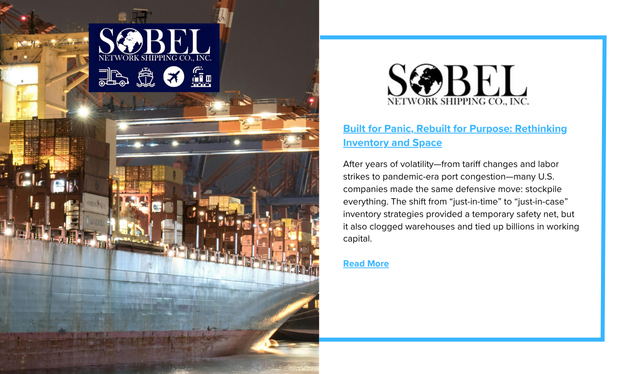After years of volatility—from tariff changes and labor strikes to pandemic-era port congestion—many U.S. companies made the same defensive move: stockpile everything. The shift from “just-in-time” to “just-in-case” inventory strategies provided a temporary safety net, but it also clogged warehouses and tied up billions in working capital.
Now, as supply chain conditions stabilize, business leaders face a pivotal choice: continue expanding space to accommodate surplus inventory, or rebuild their networks with purpose and precision.
The Inventory Bloat Hangover
What started as a protective measure has turned into an operational burden. Across industries, firms overcorrected—placing large advance orders to safeguard against shortages. While this helped avoid immediate service disruptions, it also strained warehouse capacity, increased carrying costs, and left many organizations managing stock that no longer matches current demand.
From excess seasonal goods in retail to slow-moving maintenance inventory in industrial sectors, overstocked warehouses are now a common sight. The solution isn’t always more space—it’s smarter strategy.
More Space Isn’t Always the Answer
The instinct to expand—by leasing new warehouses or adding overflow yards—is understandable, but often premature. Without examining what’s being stored and why, companies risk institutionalizing inefficiency.
Strategic inventory reviews typically reveal that 10%–20% of warehouse space can be freed through better classification, demand planning, and SKU rationalization. Before committing to additional capacity, organizations should pause and reassess:
-
Is the product mix aligned to today’s demand?
-
Are reorder points realistic?
-
Can better slotting or data-driven replenishment eliminate waste?
Segmenting Inventory with Purpose
One key lesson from the past few years: not all inventory deserves equal treatment. Applying uniform service levels across thousands of SKUs leads to misplaced priorities—critical parts compete for space with low-value or obsolete items.
By segmenting materials based on risk, usage, and operational importance, companies can adopt differentiated stocking strategies that ensure high availability where it matters most and minimize holding costs elsewhere.
This risk-informed segmentation balances resilience with efficiency. In industrial environments like energy or utilities, it means distinguishing between emergency-use materials and those needed for routine maintenance. The result is better control, fewer stockouts, and a clearer link between service levels and business outcomes.
From Expansion to Optimization
Only after inventory has been right-sized should space decisions follow. When that happens, the question isn’t “How much bigger?”—it’s “How much smarter?”
Redesigning a network around real demand allows companies to eliminate redundant stock, reallocate materials geographically, and even postpone large capital investments. The result is a leaner, more resilient footprint that can flex with market conditions.
From Overreaction to Optimization
The last few years forced companies to operate in survival mode. But today’s leaders have the opportunity to use that experience to drive transformation.
A proven, three-step framework guides this shift:
-
Classify – Segment inventory by criticality and risk to define the right service levels.
-
Right-Size – Reduce excess through forecasting and economic order modeling.
-
Redesign – Align warehouse and network design with the realities of current demand.
The companies that act now—by turning inventory from a liability into a strategic asset—will emerge with stronger, leaner, and more adaptive supply chains.


